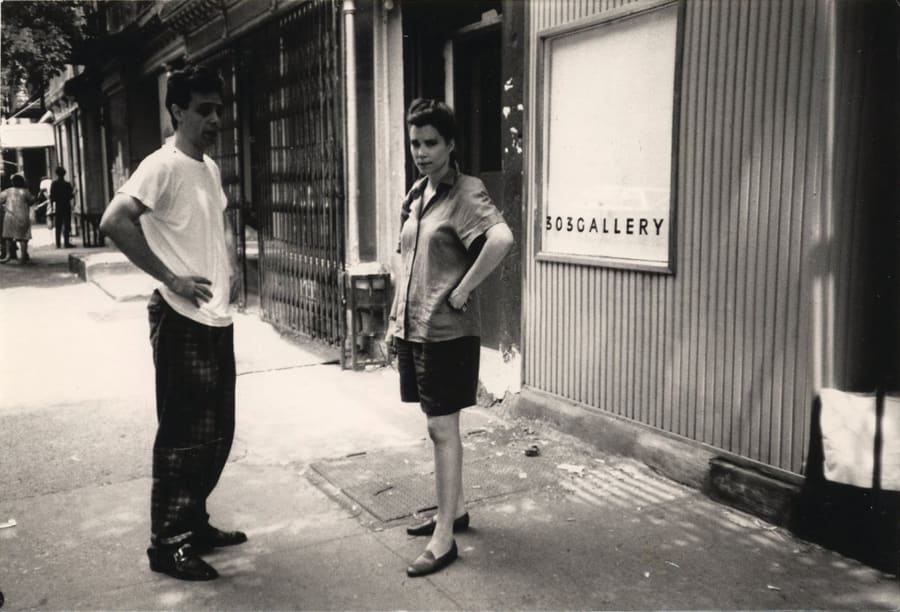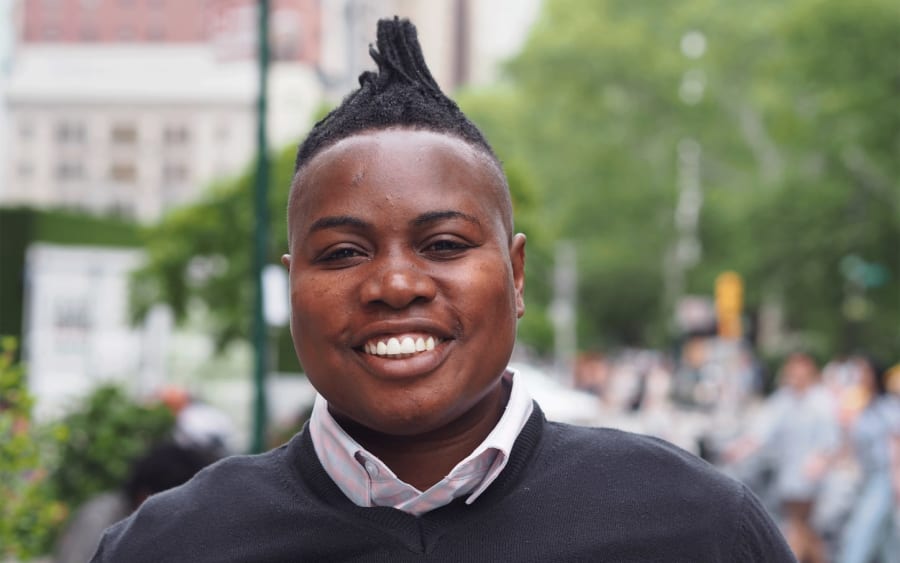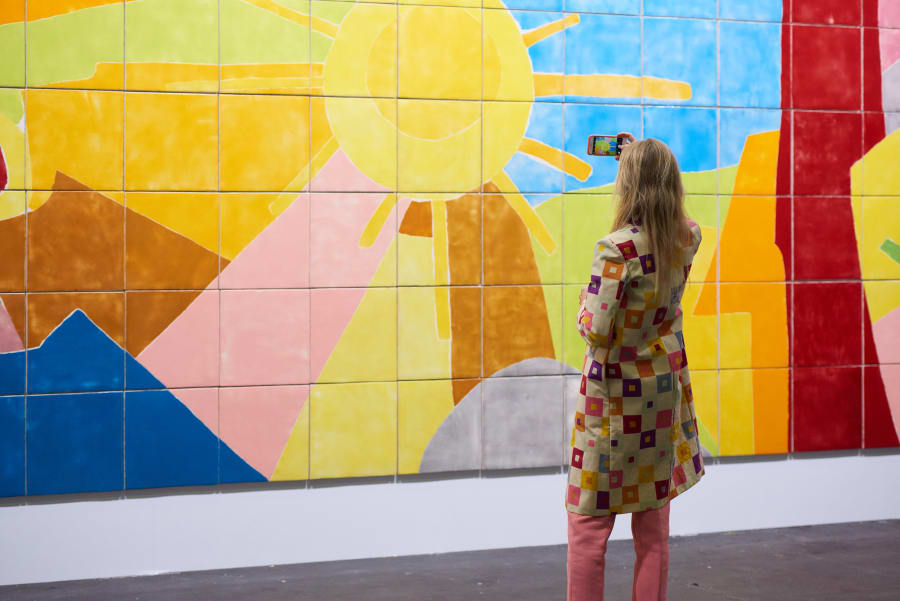This March Art Basel Stories celebrates female creativity and leadership with a new series of interviews, ‘What I’ve learned.’ In these, some of the many figures we admire across the art industry reflect on what got them where they are.
The Last of Sheila
‘To say I was a precocious child is putting it mildly. I was known as Little Lady Faunt-Lawyer for my barrage of endless inquiries. I demanded detailed answers almost as if I were a laborious trial attorney drilling a lead witness on the stand. I drove my poor, dear, long-suffering mother and older sisters completely batty. I was a needy brat, selfish and egotistical, who could never get enough attention. Those were my good qualities. I guess not much has changed.
‘I was the youngest child in a Black Creole female-centered household – and as is typical in these kinds of households, the baby is kept in the dark about almost everything. When my mother was diagnosed with cancer, my sisters didn’t tell me because they felt I couldn’t handle it. In a way, they were correct in that assumption and for wanting to protect me. I am quite a fragile creature, sensitive, and forever anxious.
‘When my mother finally succumbed to her disease in 2000, I was 39 years old, living in my birth city of Los Angeles, and took her passing very hard. I literally could not get out of bed for almost six months. My good friends the performance artist Ron Athey Jr. and the Hollywood costume designer Susan Matheson got me this wonderful therapist who was a godsend. She was a very down-to-earth butch lesbian. I’ve always adored proper butches as my mother was a lesbian femme top who ruled over a bevy of butch bottom women who absolutely worshipped and adored her.
‘My mother didn’t consider herself to be an artist but was extremely creative. Her birth name was Marie Magdalene DuPlantier, born in 1919 in New Orleans, Louisiana. She was a Black French Creole on her father’s side of the family, from a long line of free people of color. My maternal grandmother was a full-blooded Choctaw Indian who grew up on a reservation. Everyone in my mother’s family was mystical and were known practitioners of voodoo, hoodoo, and tribal majick. A lot of that filtered into the art she created.
‘I was the last one still in the nest and to keep me occupied she’d engage me with a lot of art projects and ritual as a child. My mother was also very practical and tried to teach me how to sew, crochet, and knit but I could never get the hang of it. It was too technical for my right brain. My mother was an excellent seamstress, so when I started school, I’d go to the library and research costumes throughout history and my mother would figure a pattern and make these outfits for me.
‘I was very popular in school because of my zany sense of style. So many queer kids were ostracized growing up, but I was actually embraced because of my creativity. I was friendly to everyone and was never bullied or got into fights. In elementary school, I did have a principal who wasn’t featuring me. Looking back, I think he had a little sugar in his tank and being so comfortable in my queer skin got on his last raw nerves.
‘My mother was very encouraging. She would make quite the fuss over my drawings, paintings, art objects, and early writings. I created my first zine in the first grade using a mimeograph machine. I still can smell that heavenly purple ink. My family was very poor and so my mother was inventive, using everyday household supplies for art. We also did a lot of dumpster diving, which I loved. I guess you could say it was an early indoctrination into collage and mixed media via refuse.
‘I was the first one in my family to go to university. I was an English major/philosophy minor at UCLA. One professor was quite a mentor to me – Robert H. Deutsch – who was my creative writing teacher. In class he would smoke cigars and praised my writing and the writing of my best friend at the time, a tennis dyke named Katy Adelman who was from Ventura. The other students were annoyed that Katy and I were favored by Professor Deutsch. Because I was queer and punk rock, Professor Deutsch thought I led a wild and adventurous life. Little did he know that I was still a virgin and had never even been kissed. Being a later bloomer, I didn’t even fool around with a boy until I was almost 25.
‘Over the years I’ve had a lot of breakthrough moments. I guess my first was in the third grade, when I adapted the children’s book Charlotte’s Web by E.B. White for the stage. My little production caused quite a fuss and children from other school districts were bussed in to see it. I was also interviewed by the daily papers the Los Angeles Times and the Herald Examiner and by local television. Around the same time I had my first exhibition of artworks at my local branch of the Los Angeles Public Library. I created an installation surrounding the characters of L. Frank Baum’s famous Oz books, which I was obsessed with.
‘For my big, multi-venue solo exhibition in Stockholm opening in May, I’m referencing that very first exhibition moment in childhood. One of the locations is the special collections library at the Nationalmuseum, which, oddly enough, is very similar to the Pio Pico branch of the Los Angeles Public Library, where my first exhibit was held. I spent a lot of time in the library as a dorky child.
‘It’s hard to believe that I’ve been living as an expat in Germany for over 20 years now. But the founding of the CHEAP kollektiv by our fearless leader the intermedia actress/director Susanne Sachsse, film historian Marcuse Siegelstein, and translator to the academic stars Daniel Hendrickson in 2001 was a pivotal moment for me. It was also the year I participated in the stage production of CHEAP Jewelry, which saluted Jack Smith and Carmen Miranda. This was quite the momentous occasion and led to my leaving Los Angeles to be based in Berlin permanently.
‘High femme insight and determination on all matters gives my art that special oomph that draws people in from all walks of life. I know absolutely nothing about the masculine world. I didn’t grow up with a father and had no male role models. As a child I would cry if a male workman entered our home as I couldn’t stand the tone of men’s deep voices. I’m attracted to men sexually, but I’ve never felt an affinity towards them, and have few male friends. I guess I’m something of a misandrist. I live in a female-centered cosmos surrounded mostly by female-identified personas. It’s been said that I am a woman trapped in the body of a woman.
‘I have always been an avid letter writer. I usually wake up around 5am, eat a simple breakfast of granola and yogurt or oatmeal, and spend an hour at my desk returning a myriad of correspondence via post. Writing letters by hand is so cathartic. It’s also a part of my art practice. I usually include ephemera in my letters, like drawings, photos, and whatnot. By 7:15 or 7:30am, I am in my atelier, which I call The Cheese Endique Trifecta, working on my visual art projects. I hardly perform live anymore. It’s just too draining and taxing on my health, being immunocompromised with late onset Type 1 diabetes.
‘I’ve never been a party person and I rarely drink alcohol, so going to nightclubs and bars has been out of the question for almost two decades. I did get my start performing in various clubs in Los Angeles and New York City, but since I like going to bed at around 9:30pm, sleep is more important to me. I really don’t feel like I’m missing anything.
‘I do splurge on spa treatments and getting 90-minute deep tissue massages. It helps with my high blood pressure. I used to travel quite a bit before Covid, but I always hated planes and airports. I adore stylish, well-designed boutique hotels though. Since I don’t really travel anymore, I love staycations at cute hotels in the city.
‘It’s funny how German I’ve become. Like a lot of Americans, I do have a German background on my paternal side of the family. My father was born in the Polanco district of Mexico City to a Jewish/Austrian/German mother and a Prussian Protestant father. My mother and father were never married so I am a bastard.
‘I always seem to have a few books on my nightstand that I alternate reading between. I can read very quickly, but I also enjoy dragging a book out for as long as I can before coming to the end. Right now, I’m ensconced in Alexandra Auder’s incredible memoir, Don’t Call Me Home. I don’t know Alexandra, but I’ve collaborated with her video artist father, the sexy studkin Michel Auder – on the 2016 film The Magic Flute, Part Two: A Film in Pieces – and I’m a huge fan of her mother, the Warhol superstar Viva.
‘I enjoy listening to the music of the all-female Black British punk band Big Joanie, the teenage all-girl punk band The Linda Lindas, experimental rapper and artiste Mykki Blanco, and my homegirl Alice Bag, who never fails to tantalize me with her power, fortitude, and musical dexterity. Kembra Pfahler and her glorious music and art collective The Voluptuous Horror of Karen Black are always at the top of my playlist.
‘One thing that no one knows about me is that the Japanese designer Issey Miyake saved my life.’
'Magnificent Product'
From May 17 to October 13, 2024
Moderna Museet, Stockholm
Coline Milliard is Art Basel’s Executive Editor.
Vaginal Davis is represented by Galerie Isabella Bortolozzi, Berlin.
Caption for top image: Vaginal Davis at New York University's Fales Library and Special Collections / Queer Publics, Queer Privates Conference New York University, Tisch School of the Performing Arts April, 1998.
Published on March 8, 2024.


